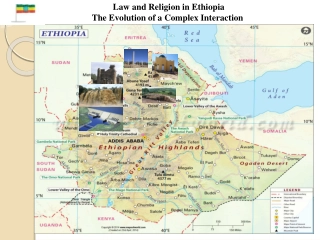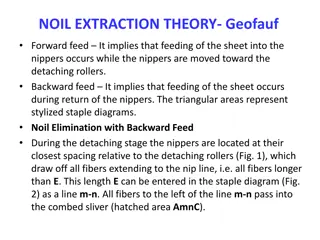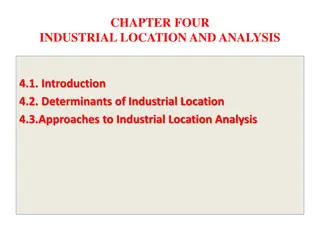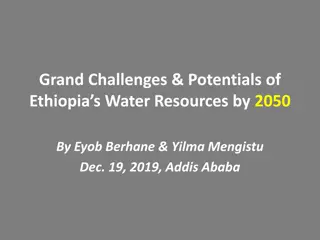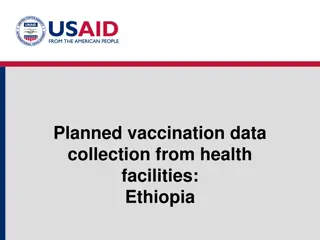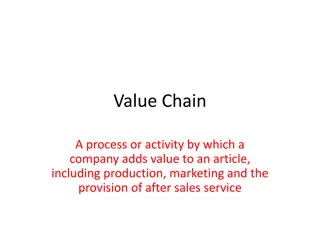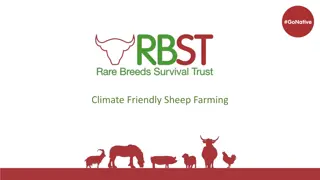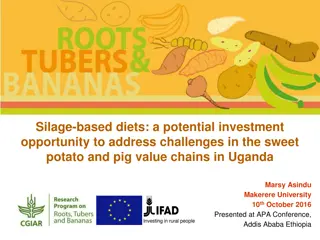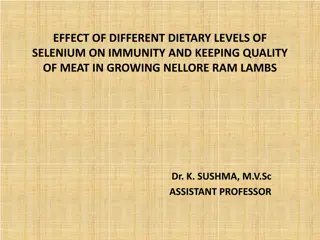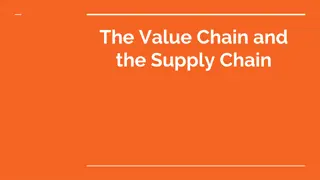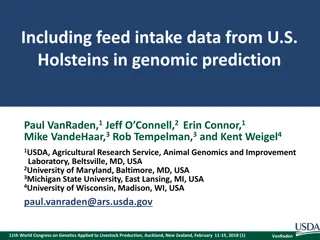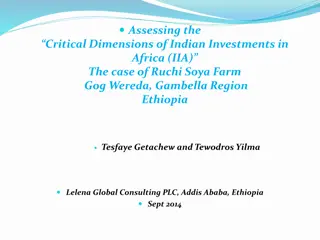Sheep and Feed Value Chain Analysis in the Central Highlands of Ethiopia
Smallholder farmers in the central highlands of Ethiopia rely on sheep for both subsistence and income generation. This study analyzed the sheep and feed value chain, identified market dynamics, and assessed constraints and opportunities. The research area, methodology, results, and key actors in the value chain were thoroughly examined to improve understanding and enhance the market system for sheep and feed.
Uploaded on Sep 29, 2024 | 3 Views
Download Presentation

Please find below an Image/Link to download the presentation.
The content on the website is provided AS IS for your information and personal use only. It may not be sold, licensed, or shared on other websites without obtaining consent from the author.If you encounter any issues during the download, it is possible that the publisher has removed the file from their server.
You are allowed to download the files provided on this website for personal or commercial use, subject to the condition that they are used lawfully. All files are the property of their respective owners.
The content on the website is provided AS IS for your information and personal use only. It may not be sold, licensed, or shared on other websites without obtaining consent from the author.
E N D
Presentation Transcript
Sheep and feed value chain analysis in the central highlands of Ethiopia By: Beneberu T., Lemma H.Y., Shenkute G., Aschalew T., and Solomon G. Debre Birhan Agricultural Research Center, Debre Birhan, Ethiopia ILRI, Addis Ababa, 28-29 May 2012 1
Introduction Sheep are owned by smallholder farmers as an integral part of the livestock sub-sector and contribute to both subsistence and cash income generation It is common to see a stack of crop residues around villages as the farmer is aware of the monetary and feed value of crop residues. Generally, it seems that there is a limited information on sheep and feed value chain and how the markets are functioning. 2
Objectives To analyze sheep and feed value chain and assess the determinants of sheep and feed market supply in the study area To identify major constraints and opportunities for sheep and feed value chain in the study area To test tools prepared for analysis of sheep and feed value chain and provide feedback for further improvement 3
Methodology Study area: Angolela Tera districts 107km away from Addis. For PRA study 2 Kebeles and within each kebele 12 representative producers were selected with the help of district agrl office experts Age, sex, wealth and educational level were considered Feed and sheep traders of the districts were interviewed representing secondary/intermediate markets. Export abattoir were also interviewed representing terminal market. Data was analyzed using descriptive and cost margin analysis . 4
Results and summary of VCA Core functions in sheep and feed value chain, activities and actors 5
Sheep market routes at North Shewa connected to Addis Ababa Producers Primary Mkt Secondary Mkt Tertiary Mkt 6
Sheep VC actors and major channels Identified channels for sheep marketing CH 1- Sheep purchased for breeding/ fattening purpose by farmers CH 2- Sheep purchased by hotels and individual consumers in the study areas CH 3- Sheep transported to Addis Ababa butchers , supermarkets and consumer markets CH 4- Sheep slaughtered at Modjo export abattoirs (Luna) 7
Feed VC actors and major channels Identified channels for feed marketing CH 1. Crop residue purchased for nearby town dairy production CH 2. Concentrate purchased by traders and cooperatives for distribution to farmers (rearing/fattening/dairy) 8
Costs and margins of actors in a market channel selling sheep to export abattoirs, butchers and supermarkets Export abattoirs Butchers Super markets Producers selling price (Birr/head) to d/t actors 620.00 900.00 650.00 Selling price (Birr/head) 1077.00 1500.00 1350.00 Marketing cost (Birr/head) 87.00 60.50 95.60 Marketing margin (Birr/head) 227.00 150.00 480.00 Net margin (Birr/head) 140.00 89.50 384.40 Producer's share of final price (%) 57.57 60.00 48.15 9
Costs and margins of actors in a market channel selling crop residue and concentrate to users Crop residues Concentrate ProducersSmall Traders traders Selling price (Birr/sack) Marketing cost (Birr/sack) Marketing M.(Birr/sack) 35 55 Selling price (Birr/Qt) Purchase from Addis (Birr/Qt) Gross margin 325 - 8 280 20 45 Net margin (Birr/sack) Producer's share of final price (%) 12 Marketing cost (Birr/Qt) 18 34.29 Net margin(Birr/Qt) 27 Concentrate include wheat bran and/or nug cake 10
Constraints and opportunities for sheep and feed Value chain Constraints Opportunity Problem in input supply Improved rams, feed seed, drug supply shortage hamper Credit - high interest, group collateral Production constraints Feed shortage and free grazing Inadequate livestock health services Lack of improved breed and forage seed Transportation constraints High cost of transportation Market constraints Lack of reliable source of mkt information Lack of market place and infrastructure Seasonality in SS and DD for sheep and feed Institutional and organizational constraints Double taxation There is double taxation at d/t checkpoints Lack of sheep and feed trader cooperatives In adequate training (Skills and knowledge) An increasingly high demand for sheep meat and animal feed in local markets Government's commitment and support to increase export of meat The establishment of Livestock Development and Health Agency Individuals engaged in fattening practice Farmers Awareness increasing Transport access to the main market High demand in Export meat Increase in number of export abattoirs 11
Conclusion The District is known to be drought prone and the sale rate is highest during crop failures and before harvest of staple food crops. Hence in these household sheep are considered as the major farm buffering assets. Nearly all of the respondents rear sheep for subsistence and to generate income. Smallholder farmers are the main suppliers of the animal and sale at any time when immediate income is required. Information on markets quantitative aspects (supply, demand, prices, producer and consumer behavior) are not adequately known. Major sheep feeds obtained from grazing on crop stubble, private pasture, road side, communal pasture, weeds, tillers and fillers. Feed availability largely depends on the season of the year when lands are covered with either Meher or Belg season crops. Optimum utilization of seasonal available feeds through preservation of crop residues and grasses and strategic supplementation with low cost alternatives like development of improved forage is vital to balance seasonal feed supply and animal requirements. 12
Way for wards Intervention works needs to correspond to the household flock holdings, best bred but small flock size. Household level sheep fattening managements is extensive through extended period using generous inputs. Research needs to provide information on efficient and economic utilization of the available resources. Quantitative aspects of marketing (supply, demand, prices, producer and consumer behavior) require prompt further investigation to provide complete marketing information. The private sector needs to be encouraged in areas of sheep development by generating and availing appropriate information for investment on the potential benefits to be gained from the growing domestic and export markets. Farmers have to be equipped with the skills of innovative knowledge that can make them improve the management and storages of crop residues and proper supplementations. 13
Lessons learned Sheep and feed production constraints in the study area are identified. Production intervention should focus in providing improved breeds and forage seeds/seedling to the area. Major sheep and feed market channels have been identified by this study. Seasonality in supply and demand for sheep and feed are recognized. Sheep and feed marketing will remain to local markets where there are no formal market information and with very little infrastructure. 14
Thank you DBARC team 15



